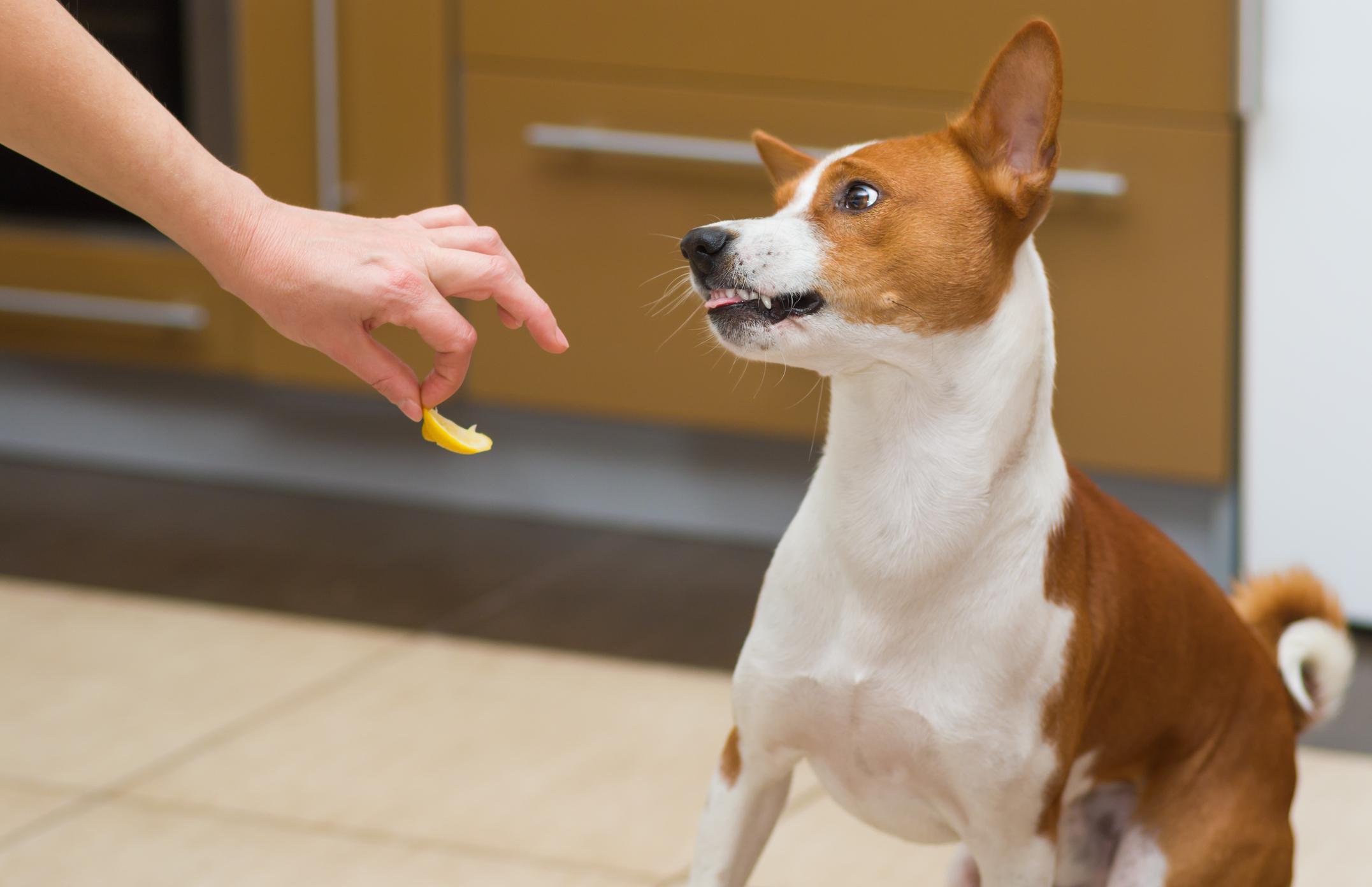What Scent Attracts Dogs to Pee?

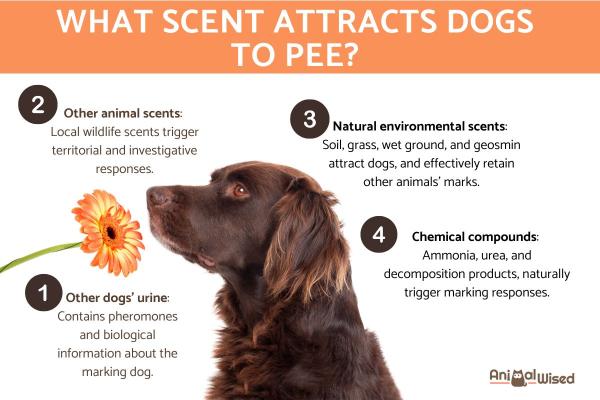
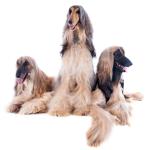
See files for Dogs
Ever wondered why your dog chooses that spot to pee? It's a question every dog owner asks, and the answer lies in their incredible sense of smell. Dogs experience the world through their noses, in fact, they can detect scents up to 100,000 times better than we can. Their nose that contains up to 300 million olfactory receptors compared to our mere 6 million. So, while we might see just a patch of grass, they're picking up a complex cocktail of chemical messages. Understanding what attracts dogs to urinate in specific locations can help with both training and preventing unwanted marking behaviors.
This AnimalWised article explores the scents that attract and repel dogs from urinating in certain areas, offering valuable insights into successful potty training.
Other dogs' urine
The urine of other dogs is the strongest natural attractant for dogs. When a dog encounters another dog's urine, they're not simply detecting a smell, they are reading a complex chemical message.
This message contains detailed information about the marking dog's reproductive status, health condition, stress levels, and even their recent diet. The compounds present in urine can remain detectable for days or even weeks under favorable conditions.
Male dogs are particularly drawn to the urine of female dogs in estrus, as it contains specific pheromones signaling reproductive availability. These pheromones, known as estrus-indicating compounds, can trigger intense interest and marking behavior in male dogs from considerable distances. Similarly, female dogs often show increased interest in male dog urine during their reproductive cycle.
Your dog's incredible sense of smell doesn't just guide their bathroom habits, they can actually detect subtle changes in your body chemistry. Find out more about your pet's extraordinary olfactory abilities in our next article.
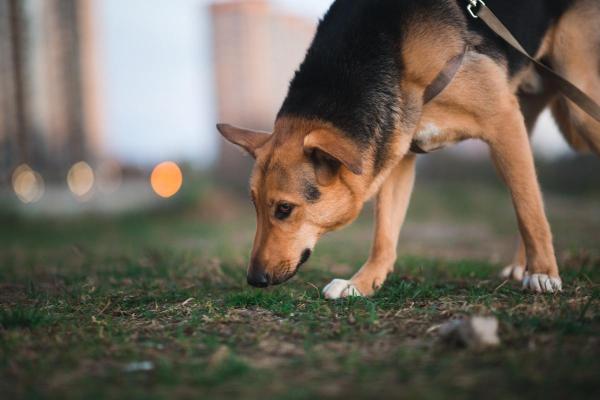
Animal scents
Dogs' attraction to other animal scents extends well beyond their own species. This behavior has deep evolutionary roots in their hunting and territorial instincts.
When dogs encounter scents from cats, rabbits, or other wildlife, their marking behavior often intensifies. This response stems from their ancestral need to establish territory boundaries and communicate their presence to both prey and potential competitors.
Different animal species communicate through distinct scent signatures. Cats, for example, mark their territories by depositing facial pheromones and urine containing felinine, a unique amino acid compound. Dogs encountering these feline scent marks often engage in "overmarking," depositing their own scent on or near the existing mark. This behavior serves both as a form of communication and a way of establishing or reinforcing their own territory.
Grass and earthy smells
The interplay of soil, vegetation, and weather creates a rich olfactory environment that dogs find particularly appealing.
Natural surfaces like soil, grass, and sand act as nature's message boards for dogs. These materials have microscopic pores that trap scent molecules, creating long-lasting olfactory signals. Organic-rich soils are especially effective because they contain compounds that interact with urine, creating complex scent markers.
Soil bacteria further contribute to this process by breaking down these markers over time, releasing new, attractive compounds like geosmin, which gives the soil that characteristic "earthy" smell dogs enjoy.
Moisture is crucial for scent detection. During and after rain, water molecules combine with existing scent particles, creating a more intense olfactory experience that often triggers increased marking behavior.
Vegetation adds another layer to this environment, emitting its own attractive chemical signals and acting as a good scent-retaining structure. Tall grasses, tree bases, and sturdy plant stems are popular marking spots, likely because they combine good scent retention with a convenient height.
Did you know that dogs gather even more detailed social information during their seemingly awkward greetings? Explore the fascinating science behind this natural canine behavior.
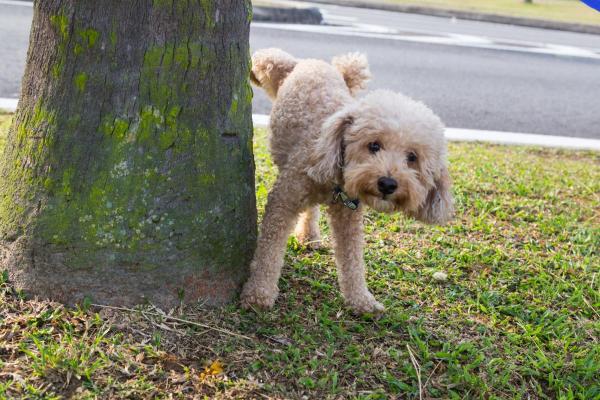
Fermented and musky scents
Dogs are strongly attracted to fermented and musky scents, a preference rooted in their evolutionary history as scavengers and hunters. These odors, often unpleasant to humans, can trigger strong behavioral responses in dogs.
Natural musky scents originate from various sources, including decaying organic matter, animal glands, and certain soil bacteria. In the wild, these scents often signal potential food or the presence of other animals. The chemical compounds responsible for these attractive smells include thiols, volatile fatty acids, and specific pheromones found naturally in animal secretions.
Some cleaning products inadvertently mimic these natural attractants. Products containing ingredients derived from fermentation or those with strong, musky base notes can trigger a dog's urge to mark. Common cleaning ingredients like vinegar and citrus can smell a bit like animal marking signals to dogs.
This explains why, after cleaning a spot where a dog has marked, they often return and mark it again. To break this cycle, it's best to use enzymatic cleaners designed specifically for pet messes. These cleaners actually break down the scent components of the mark, rather than simply masking them or, worse, creating new attractive scents.
What smells repel dogs from peeing?
First, let's address deterrent sprays. Some commercial products can be helpful, especially those containing citronella oil, eucalyptus, wintergreen, or bitter apple. These are generally safe for dogs, but remember, individual dogs have scent preferences. What repels one might not bother another.
However, sprays alone rarely solve the problem completely. A truly effective strategy involves multiple approaches.
The first step is a thorough cleaning. You absolutely must use an enzymatic cleaner specifically designed for pet urine. These are different from regular household cleaners because they contain enzymes that actually break down the odor-causing molecules in urine.
Regular cleaners might smell okay to us, but to a dog, they often just mask the scent, or even worse, combine with the urine to create new smells that are even more attractive for marking.
Now, for the most crucial element: positive reinforcement. Whenever your dog pees in the correct spot immediately reward them with treats, praise, and happy vocalizations. Dogs learn through association, so by rewarding the desired behavior, you're teaching them where they should go.
Finally, let's debunk some myths and avoid some common mistakes. You might hear people suggesting things like hot sauce, perfumes, vinegar, or citrus fruits as deterrents. However, these are not good. Hot sauce can burn your dog's sensitive nose, perfumes often contain chemicals that are actually attractive to dogs, and vinegar and citrus smells can sometimes mimic the scent of urine, which can encourage marking.
Now that you know what attracts dogs, curious about what makes them turn their sensitive noses away? Discover the scents that your furry friend would rather avoid.

If you want to read similar articles to What Scent Attracts Dogs to Pee?, we recommend you visit our Basic education category.








